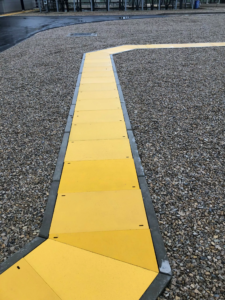In the UK, there is an estimated fall on stairs every 90 seconds (BS 5395-1).
Although some of this is down to simple human error, many accidents are caused by the poor design and maintenance of stairs. This post should help to explain what the Equality Act means in terms of safe stairs, and the simple and cost-effective changes you can make to ensure your stairs are compliant.
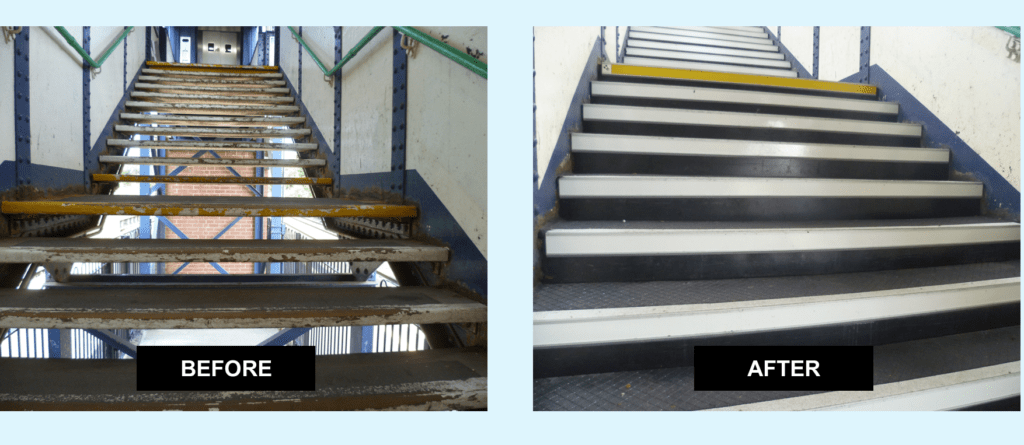
What is the Equality Act (2010)?
The Equality Act (2010) was introduced by government in October 2010 to replace previous anti-discrimination acts (such as DDA), with one single act to cover all types of discrimination. The Equality Act requires that reasonable adjustments be made to the accessibility of public and business premises and facilities. Put simply, you must now take reasonable steps to ensure that disabled people, such as those with a visual impairment, are not disadvantaged by the access to facilities that you provide.
How Does This Affect Me and My Business?
Discrimination under the Equality act is unlawful. If you fail to make reasonable adjustments to access routes, you can be taken to court. You can then be forced to make these adjustments and may even have to pay compensation. However, the adjustments required are simple and easy to complete!
Equality Compliant Stairs – Checklist
Step Dimensions
To minimise the risk of falling, it is recommended that the height and width of each step are consistent.
Anti-slip
An anti-slip stair tread provides a safe surface underfoot. The British Standard BS8300-2: 2018 recommends that a slip-resistant surface finish should be considered, to reduce the risk of trips and falls. The slipperiness of a surface is measured using PTV, which stands for pendulum test value. A PTV of greater than 36 is considered suitable. The standard also states that some visually impaired users may feel a sense of insecurity stepping on open grates, and sight dogs may refuse to proceed. Anti-slip stair treads should therefore be used to cover existing open mesh stairs to create a solid and non-slip step.
Use of Nosing to Highlight Step Edges
Permanency:
Temporary measures used to highlight step edges should be avoided. Paints and tapes may easily move or become worn, and if insecurely fixed this could create a trip hazard of its own.
Light Reflectance Values – Nosing Colour:
The LRV value indicates how much visible light a colour reflects. Every colour has an LRV value of somewhere between 0-100, with black having an LRV value of 0, and white having an LRV value of 100.
The British Standard BS8300-2: 2018 states that: “Each step nosing should incorporate a durable permanently contrasting continuous material for the full width of the stair on both the tread and the riser to help people who are blind or partially sighted appreciate the extent of the stair and identify individual treads”.
It also states the importance of visual contrast, with a contrast of 30 points or more sufficient to provide reasonable visual contrast for the visually impaired. This means that each step should be fitted with a minimum 55mm wide coloured nosing that is a stark contrast to the colour of each step, helping the user to define the edge of each step.
How Can Elemy Help?
Elemy Anti-Slip Stair Nosing and Tread Covers
Elemy’s anti-slip GRP stair nosing and stair tread covers are a simple and cost-effective way to ensure your stairs are equality act compliant. GRP nosing’s cover only the step edge and are easily fitted to existing stairs to achieve compliance. GRP tread covers sit atop the whole stair tread and provide a flat, anti-slip surface including a contrasting colour nosing. Tread covers are often used on old, heavily worn steps which have become unsafe.
Made from hard-wearing GRP, both the nosing’s and treads are strong and durable, yet lightweight and easy to install. Finished with a quartz gritted surface, they give a high PTV reading (70+ PTV), indicating extremely low-slip potential in dry, wet, and oily conditions. Medium or fine grit options are available depending on the application, with R13 slip resistance according to DIN 51130 for medium grit and R12 for fine grit. A chamfered back edge also eliminates any tripping hazard.
Our standard nosing colour options are Yellow RAL 1003, Black RAL 9004 and White RAL 9003, as they typically provide a stark visual contrast to dark or light-coloured steps. However, other colour options are available upon request. Just because you need the correct LRV, it does not mean you should have to sacrifice on design.
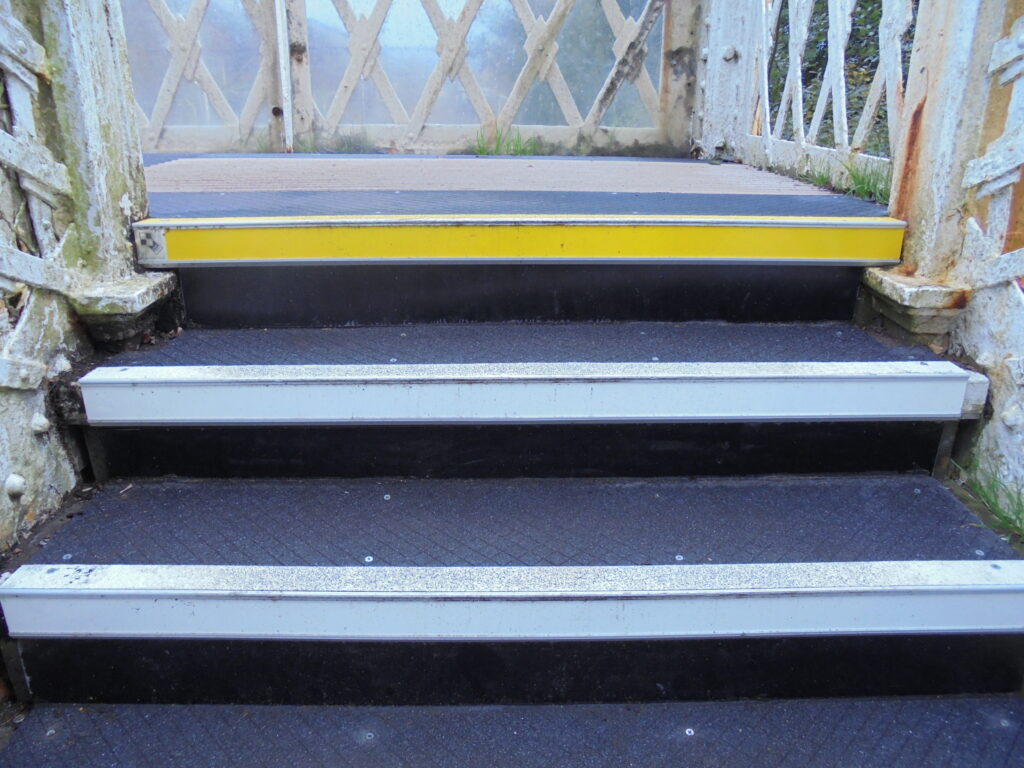

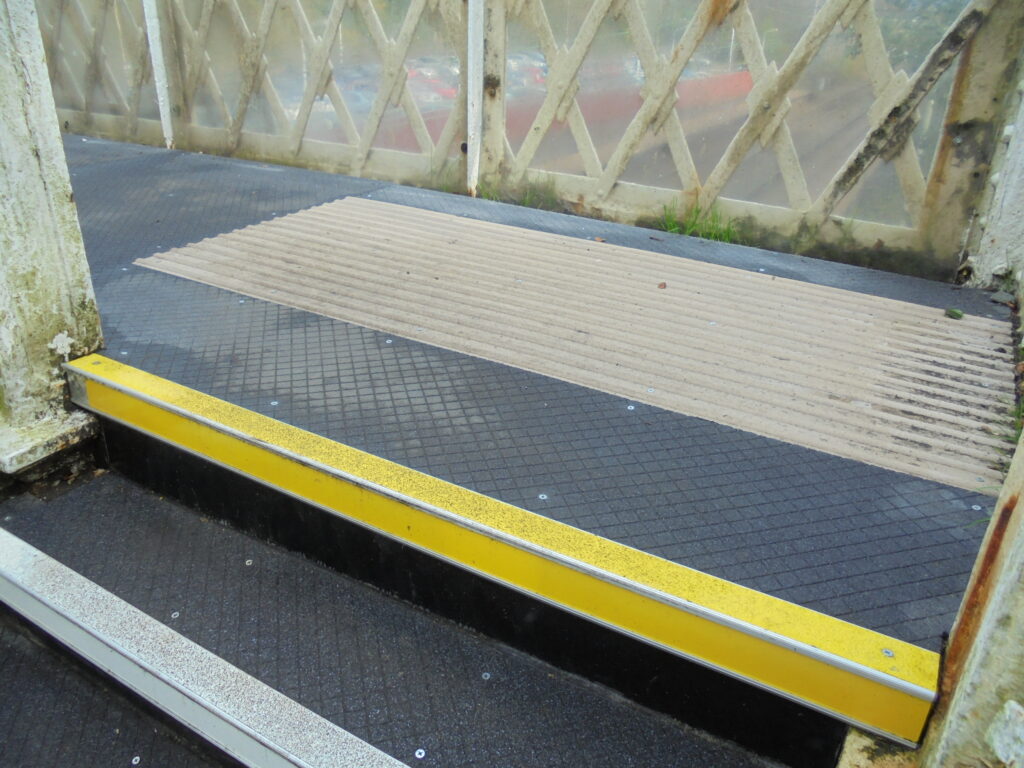
Additional Stair Safety Measures:
Tactile Paving
Elemy can also supply tactile paving. A detectable contrast in texture underfoot can help a visually impaired person to move around more safely. Tactile paving commonly signifies a hazard and is generally used at the top and bottom of stairways.
Handrail
A smooth and continuous handrail will aid users that are disabled. Elemy provide handrail that is a visual contrast to its surroundings to support visually impaired users. The equality act also states that a mid-rail must be used to assist smaller or younger users, where the top rail may be of little help.
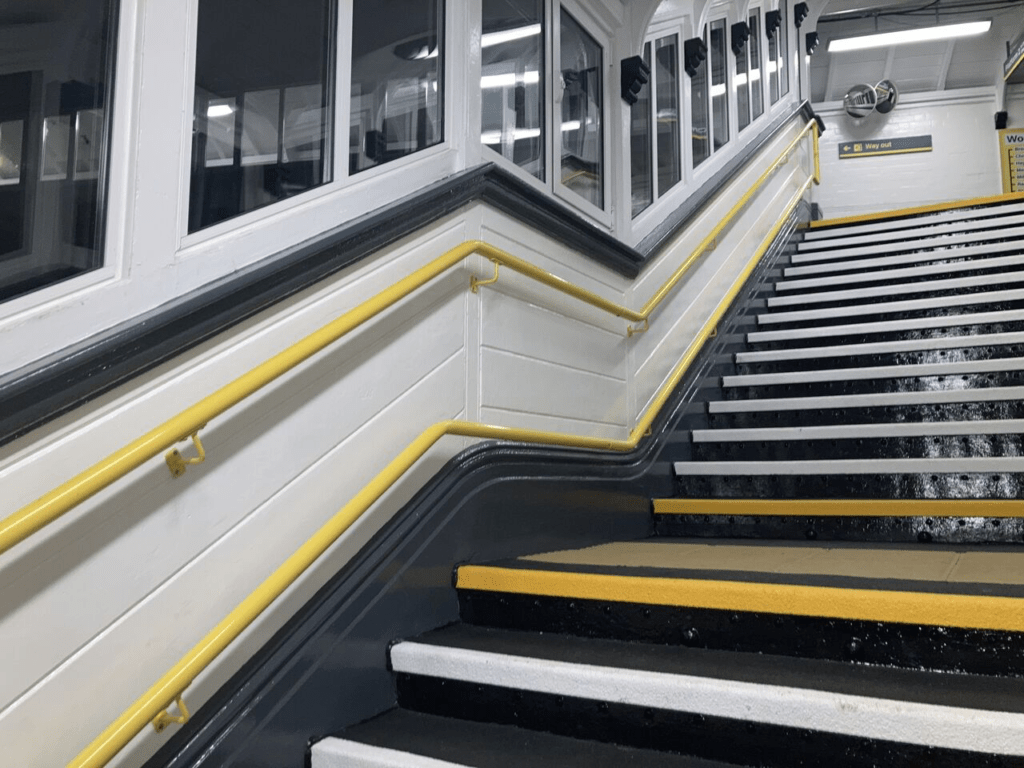
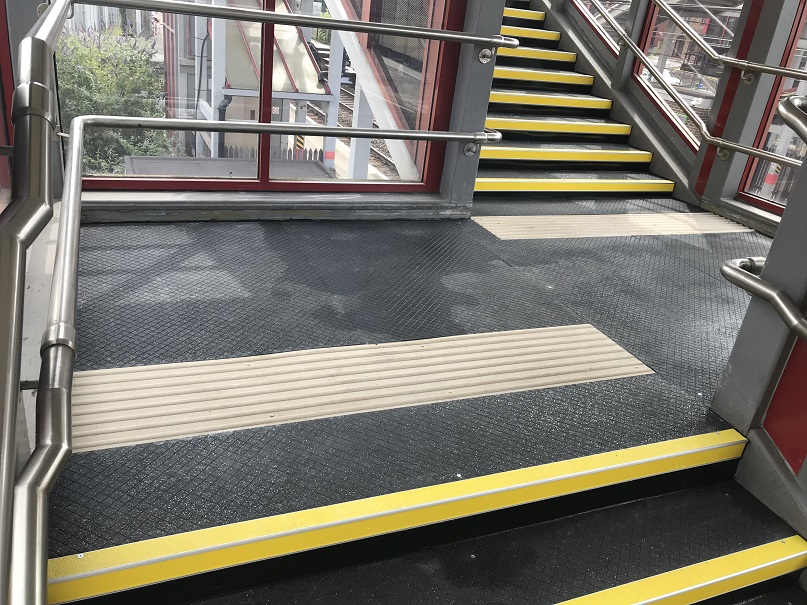
Elemy are well placed to provide an entire anti-slip stair package, helping you meet your health and safety requirements. For any further advice or information, use the button below to contact us and we’ll be more than happy to help.

